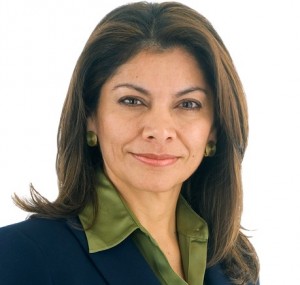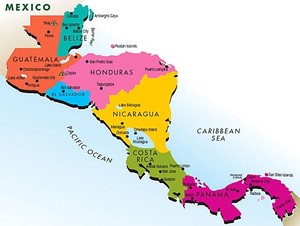Mary Liepold
Peace X Peace
Here’s the data. Costa Rica ratified the Convention on the Elimination of All Forms of Discrimination against Women, the international women’s bill of rights, in 1986, and its Optional Protocol in 2001. (The US has yet to ratify it.)

An Act Promoting the Social Equality of Women became law in 1990. The Beijing Declaration and World Platform for Action that followed the 4th World Conference on Women in 1995 inspired a new series of laws and policies in Costa Rica. Its National Institute for Women (INAMU), established in 1998, oversees all policies that affect women. A cabinet-level Minister on the Status of Women serves as Executive Secretary of INAMU.
- At least in the formal sector, Costa Rican women earn 90% of what their male counterparts earn.
- Women hold 39% of the seats in the national legislature.
- The 2012 Social Institutions and Gender Index ranks Costa Rica #2 overall among 86 non-OECD countries, up from 5th place in 2009.
“Non-OECD” means that Costa Rica, like first-place Argentina, is classified as a developing country. What’s more, it’s a Latin country, one of those whose language and culture gave us the word machismo, and its complement, marianismo.
So, yes, there’s a gap between law and practice. Those of us who live in one of the 34 OECD member, or most-developed countries, know we have gaps here too ― some big enough to swallow lives.
Costa Rican President Laura Chinchilla Miranda is committed to closing the gaps. “Women continue receiving less salary for the same kind of job,” she said in a 2011 Forbes interview. “Women have a higher unemployment rate in our country. When you analyze the composition of poverty, you will find that most of the families in poverty are being run by a woman. Also, a big issue is violence against women.”
Here’s a quick summary of what I’ve learned about policy and practice, from both research and conversations with those who know the country best.
Family Status
In 1973 Costa Rica became one of the first countries in the world to pass legislation granting parental authority to both spouses. This law also provides for equality in the case of divorce. A 1995 law on common-law marriages took it a step further, providing for equality between cohabiting partners. The 2001 Responsible Paternity Act outlaws discrimination against women with children born out of wedlock or not recognized by the father.
The government of this predominantly Catholic country considers sexual and reproductive health a fundamental right. Women’s access to contraception is guaranteed by the General Health Act, and the Ministry of Health runs outreach programs to increase the use of reproductive health services, including access to contraception. According to the CIA’s 2012 World Factbook, Costa Rica’s birthrate is 1.92, below ZPG and slightly below the US rate of 2.06.
The legal marriage age is 18, but 15-year-olds can wed if both parents give permission. In 1986, 20% of marriages involved teens. By 2010 that number had been almost halved, to 10.5%.
And who does the dishes? As in the US and other “developed” countries, the domestic power balance is tilting toward equality, and it’s still far from ideal.
Education, Employment, and Economic Status
According to UNICEF, enrollment and attendance rates at primary and secondary schools are higher for Costa Rican girls than for their brothers. The high school enrollment rate is 92% for girls and 87% for boys. High school attendance rates, at 65% and 59% respectively, are lower for both genders but follow the same proportion.
The rate of women’s employment grew 26% between 2000 and 2012, according to an August 2012 World Bank report. The law requires that Costa Rican women and men receive equal pay for equal work. Women are entitled to four months paid maternity leave at 100% of wages, plus three months more in case of medical necessity. Half the payment comes from the national social security system and half from the woman’s employer, as long as she was contributing to Social Security for six months in the year preceding pregnancy. When that’s not the case, the employer pays two-thirds of her salary. Pregnant or nursing mothers cannot be fired except for cause, like any other employee. These rules apply only to women in the formal economy, and not to the many in domestic service or the informal economy.
Even domestic workers have some security, though. Along with Argentina, Chile, Brazil, and Panama, Costa Rica has instated means-tested national pension programs for both women and men that do not depend on money paid in. This is especially important for women because we live longer than men. The nation’s poverty rate is just 2%, according to the PensionWatch Country Fact File.
Political Power
Observers note that quotas have been more effective in Costa Rica than in any democratic country anywhere. President Chinchilla Miranda, who took office in 2010, is the nation’s first woman president, one of three currently serving in Latin America and twenty worldwide. The deputy chief justice of the Supreme Court is a woman and so are the presidents of the High Court of Civil Appeals and the Constitutional Chamber and the ambassador to the US.

The country’s Supreme Electoral Tribunal (TSE) now requires that a minimum of 50% of candidates for elective office be women and, significantly, that women’s names be placed alternately with men’s on the ballot for each party slate. In August the TSE reported that 49% of the candidates running for office in the December local government elections are women. Women are almost 39% of the legislature, holding 22 of 57 seats and including the vice president of the assembly, the government party leader, and nine legislative committee chairwomen. (The percentage is 17% in the US.) There were 7 women in the 21-member cabinet as of May 7, 2012.
Violence against Women and Children
The National Institute for Women is particularly active on issues relating to violence against women, providing services to victims as well as advocating for better legal and practical protection. Sex work is legal, but pimping is against the law. Sexual violence remains a problem, with some evidence that rates have increased in recent years. Trafficking in women and even children is a growing concern.
The burgeoning eco-tourism, which has been a boon to the economy, brings sex tourism as well. Prisons, including the women’s prison, are overcrowded, mostly because of drug-related offenses. In the Forbes interview, President Chinchilla described her country as “caught between the producers in the South and the consumers in the North.” She was talking about drug traffic, but it’s also true of traffic in persons.
These are serious, serious problems. “It’s easy to come and do bad stuff because there aren’t a lot of police outside the capital,” says Sharon Ann Wildey, an American resident of Costa Rica who loves the country and its people and generously shared her impressions. Even one incident of sexual violence or child abuse is one too many. Yet there is no widespread impunity, according to the US Department of State’s 2010 Human Rights Report.
Ticos support their government because it provides them with education and what Wildey calls “heroic” medical care. They don’t want government involved in their everyday lives, and outside the capitol and the coastal regions, where crime and police power are both concentrated, they have a rough, macho way of taking matters into their own hands. Overall, perhaps it’s still a good thing to have more teachers than police, as my previous article suggested.
Or maybe not. Is Costa Rica one of the best places in the world to be a woman?
Newsweek’s 2011 list of the 20 best places had no winners in Africa, the Middle East, or Latin America. Can a country that loves peace be a bad place to be a woman?
What do YOU think? We’d love to hear your opinions.
Mary Liepold is editor in chief of Peace X Peace




